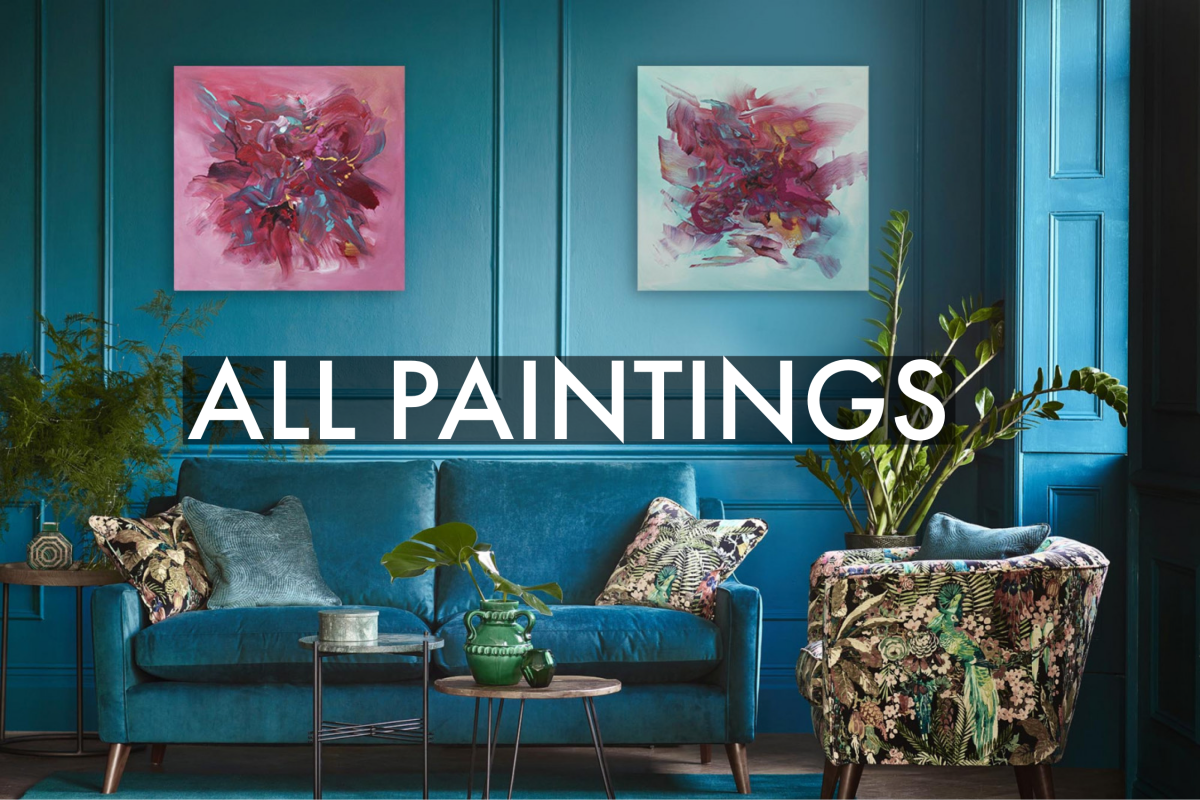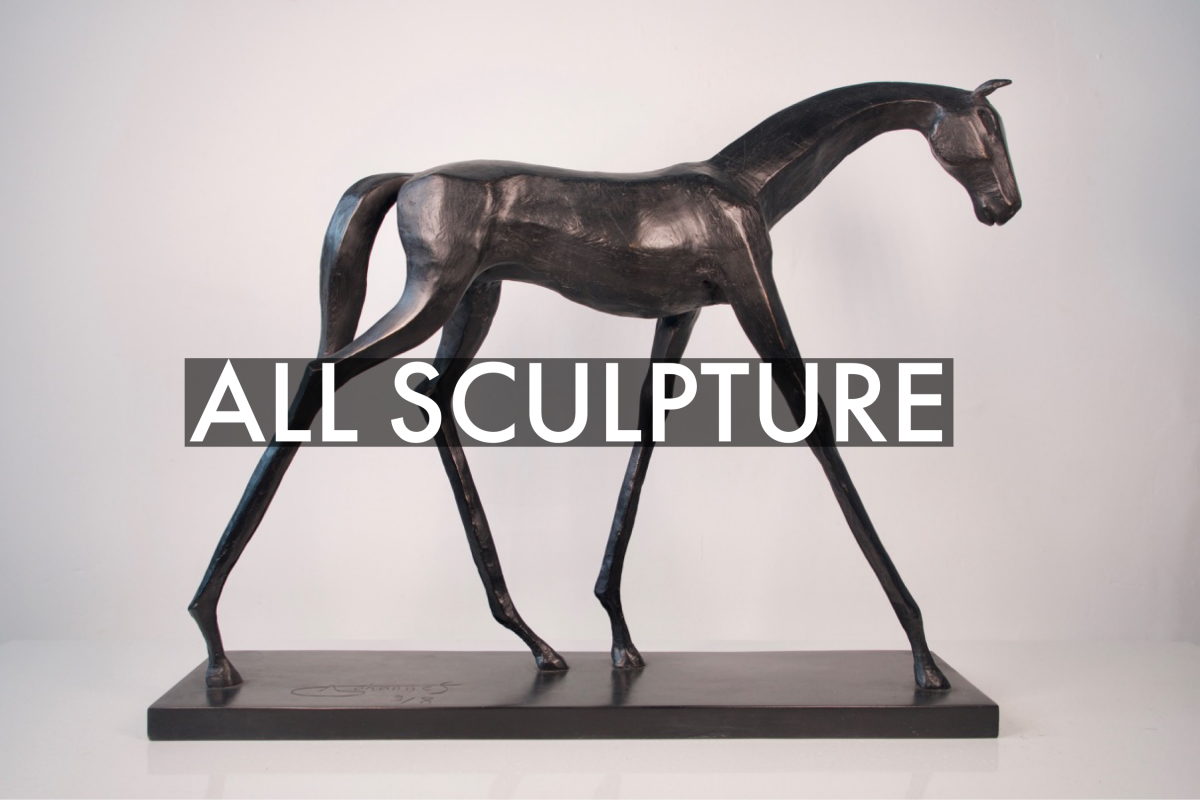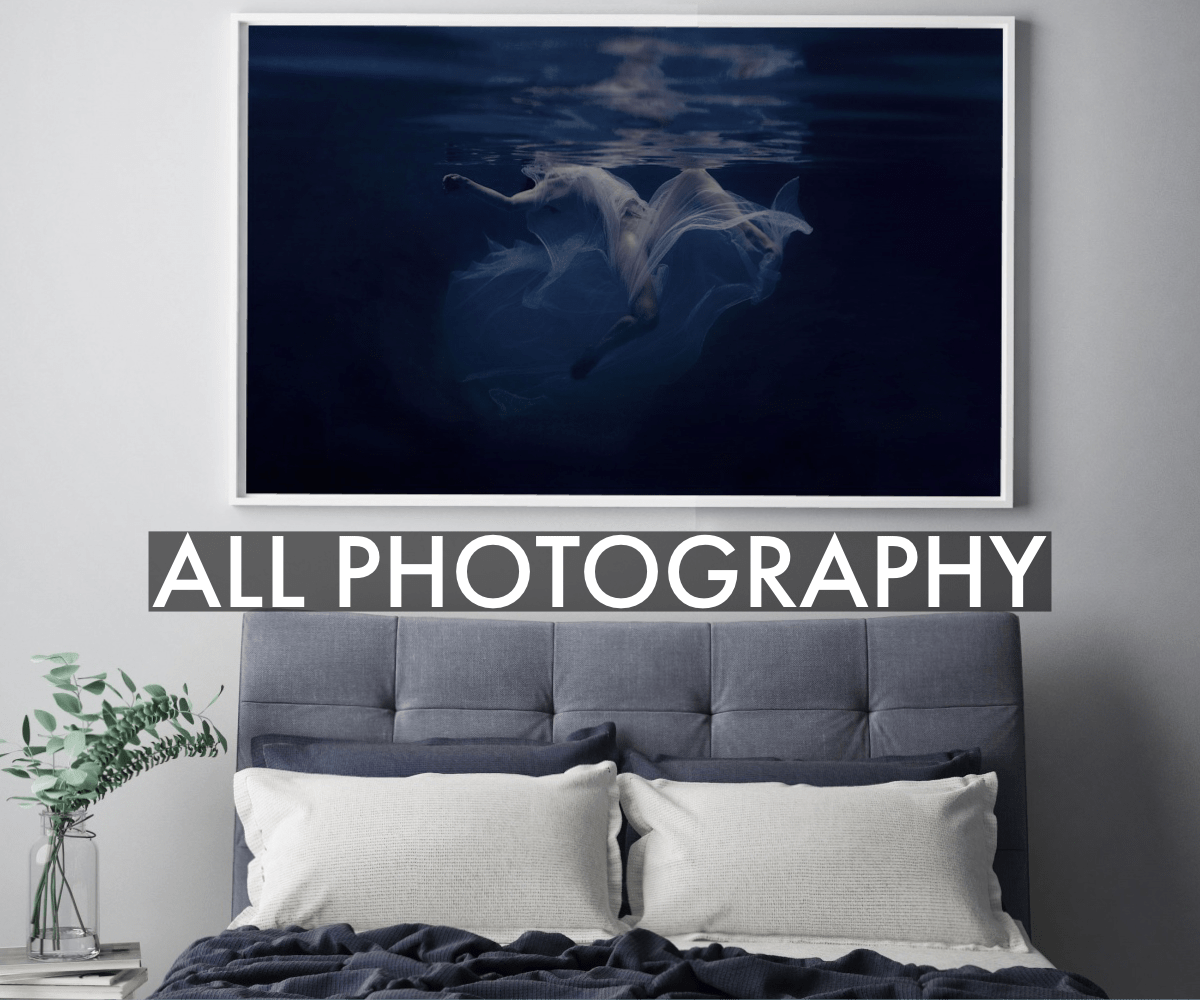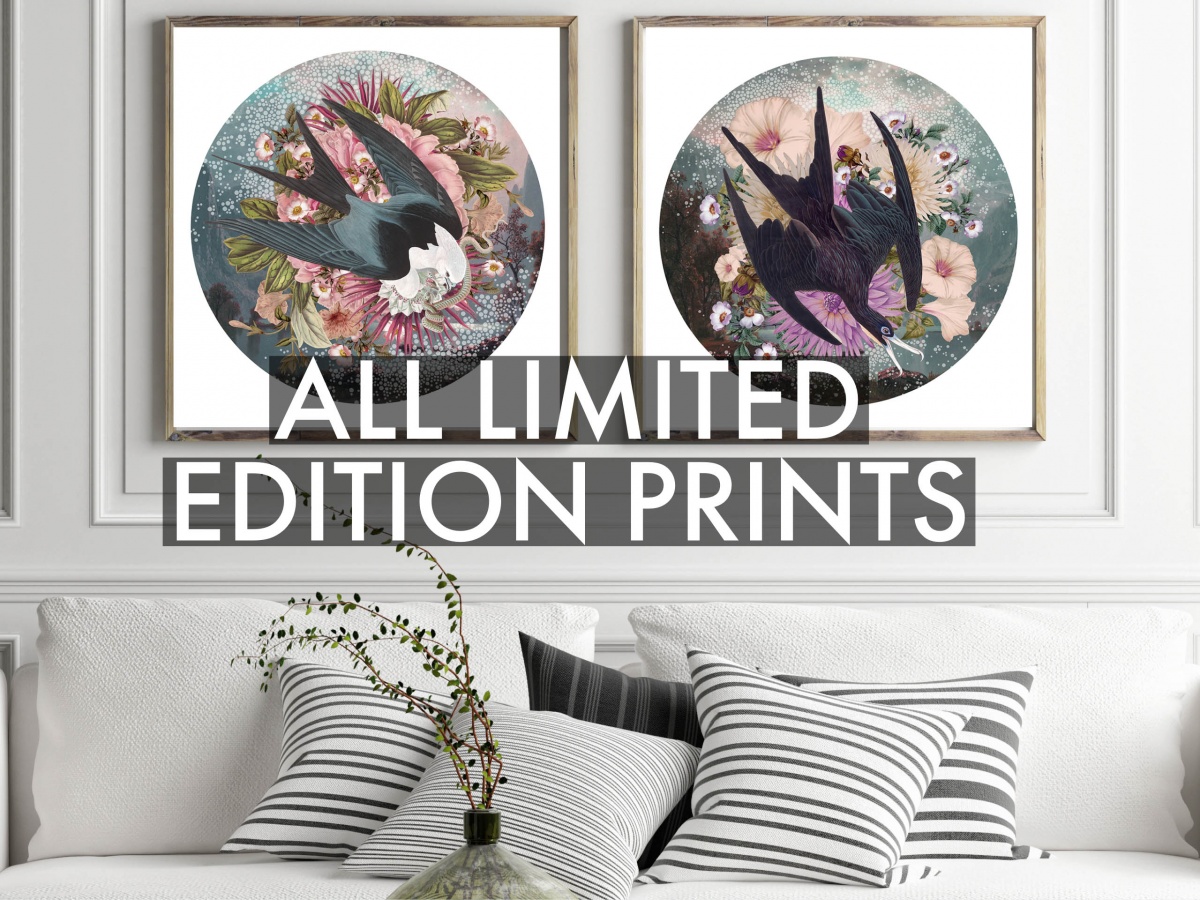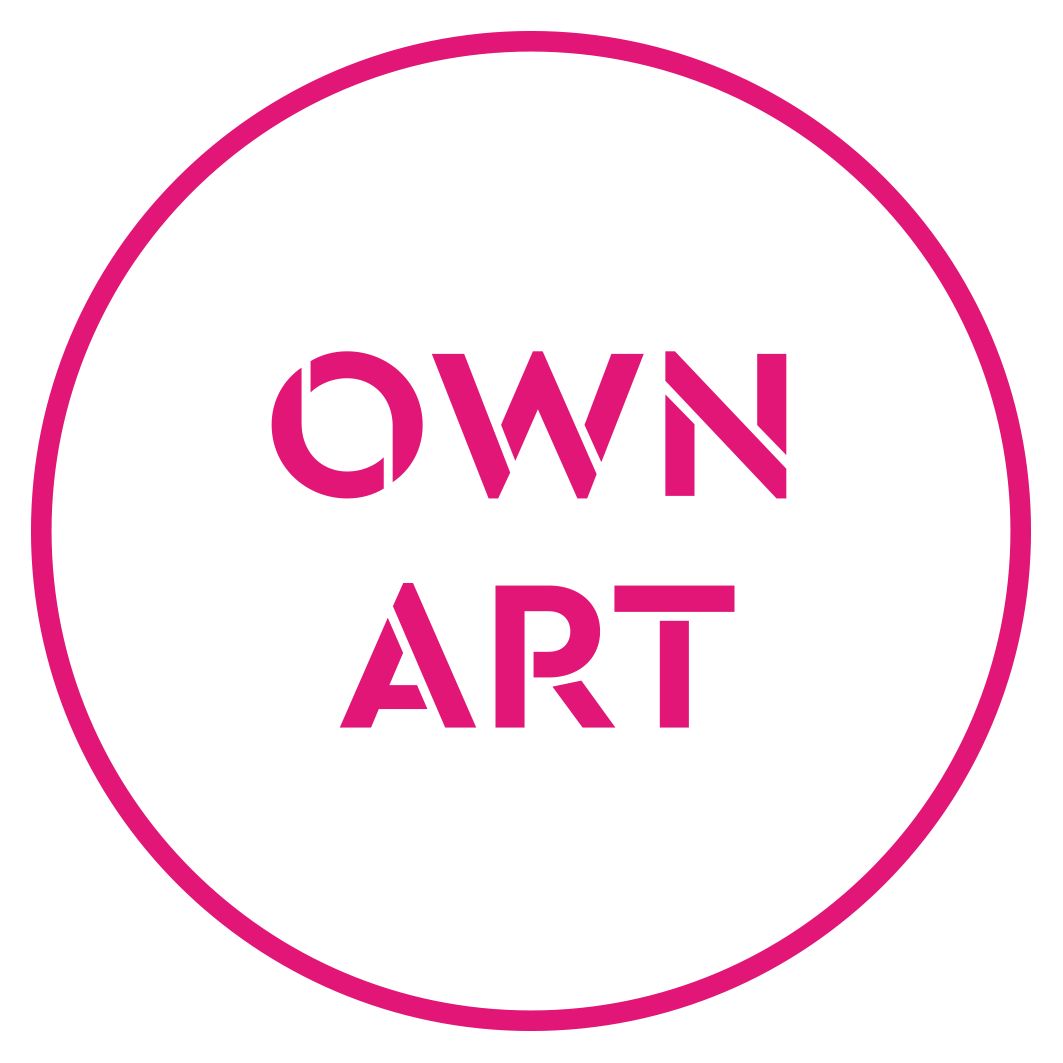Meet the artists that have taken over our Instagram every Thursday in the past month! Showcasing exclusive interviews with Leah Michelle, Kasia Sifantus, Jacob Brown, and Nikolai Kozin.
LEAH MICHELLE

1) Walk me through a typical day in the studio for you?
LM: I start brainstorming ideas and colour schemes in advance and print out images that have inspired me with their colours or compositions. I carve out a 2-3 hour time slot in my home studio 2 or 3 times a week and start each new series with compositional sketches and colour studies. Once I’m happy with these, I get to the exciting (and messy!) part of putting paint onto canvas. My studio, and in return my artwork, becomes a safe space for embracing my thoughts and reflections, and I hope others experience a similar feeling when in front of my work.
2) What is something viewers might not know about your work?
LM: The surface can be an illusion! Behind most of my paintings are the fragments of past works or complete erasures of works that felt off. The marks that are left behind, some intentional and unintentional, shape and lift the composition you see before you. I secretly love the idea that some day in the future people may be seeking to see what’s below the surface as well.
3) What is the most challenging part of your process as an artist and what is most rewarding?
LM: Challenging: Not being able to paint what’s in my head when I first start a new piece! My whole process is about creating layers of rich details within a simplified structure but sometimes the canvas and life in general have other ideas. So I try to welcome the mistakes as well as the triumphs and celebrate the beauty within each mark or colour that makes my heart feel at ease. My art changes as my world does, and so each series adapts and connects the past and present with the beauty and balance within. Rewarding: It’s so rewarding when I get to see my works in their new homes, and I love even more to meet my lovely collectors! They inspire me to continue painting and exploring my pure and raw emotions so that we all can benefit from a more beautiful and colourful world.
4) Is there any advice you have for artists/creators during this difficult time?
LM: As I also run the New Artist Fair and Talented Art Fair (coming up soon from 1-3 July 2022 at Brighton Racecourse), I always say to our artists that you must be willing to invest time and money in your own artistic path. You must choose what kind of artist you want to be and then set out a path to achieve your goals. People can only see or experience your work if you put it out there! Art fairs, online gallery spaces like DegreeArt and social media are all great ways to show and sell your work, and by being invested in yourself, others will follow suit. Always be nice and remember your reasons for wanting to be an artist!
KASIA SIFANTUS

1) Walk me through a typical day in the studio for you?
KS: A typical day in the studio requires some music or an audiobook on, sometimes candles. I try to squeeze in as much work as possible in the morning as this is where I'm most productive and children free. I usually plan the collections beforehand, so I know what type of painting I'm creating but the actual process is intuitive, the work unfolds with every brush stroke and often is different to what I had in mind originally. I work on several pieces at the same time, usually at different stages, so I don't waste time waiting for something to dry. At lunch time I pick up my children from the nursery and continue working around them. Having a studio at home is very helpful. I finish my day by preparing canvases for the next one.
2) What is something viewers might not know about your work?
KS: I think most people know that I work mainly with pigments, however not everyone knows that some of those pigments I make myself from materials such as sand or burnt wood, by grinding them finely. Last summer I painted a couple of seascapes from pigments made of Atlantic beach sand. I enjoy the whole process very much, it becomes part of the painting's story.
3) What is the most challenging part of your process as an artist and what is most rewarding?
KS: The most challenging part of my process as an artist is probably not being able to 'control the paint' - I do lot's of pouring in my first layers and when it's drying it can overflow and create something completely different. Also I pour the paint (pigments) over the gold leaves that can soak them and destroy them, so I need to be careful with the proportions of water - medium that I use. The most rewarding is definitely seeing the finished piece hanging in the gallery or in their new home.
4) Is there any advice you have for artists/creators during this difficult time?
KS: If anyone would ask me for advice during this peculiar time, it would always be - believe in yourself and in your art, don't be afraid to reach out to organisations/people to gain extra exposure, look for new collaborations, there's always an opportunity somewhere.
JACOB BROWN
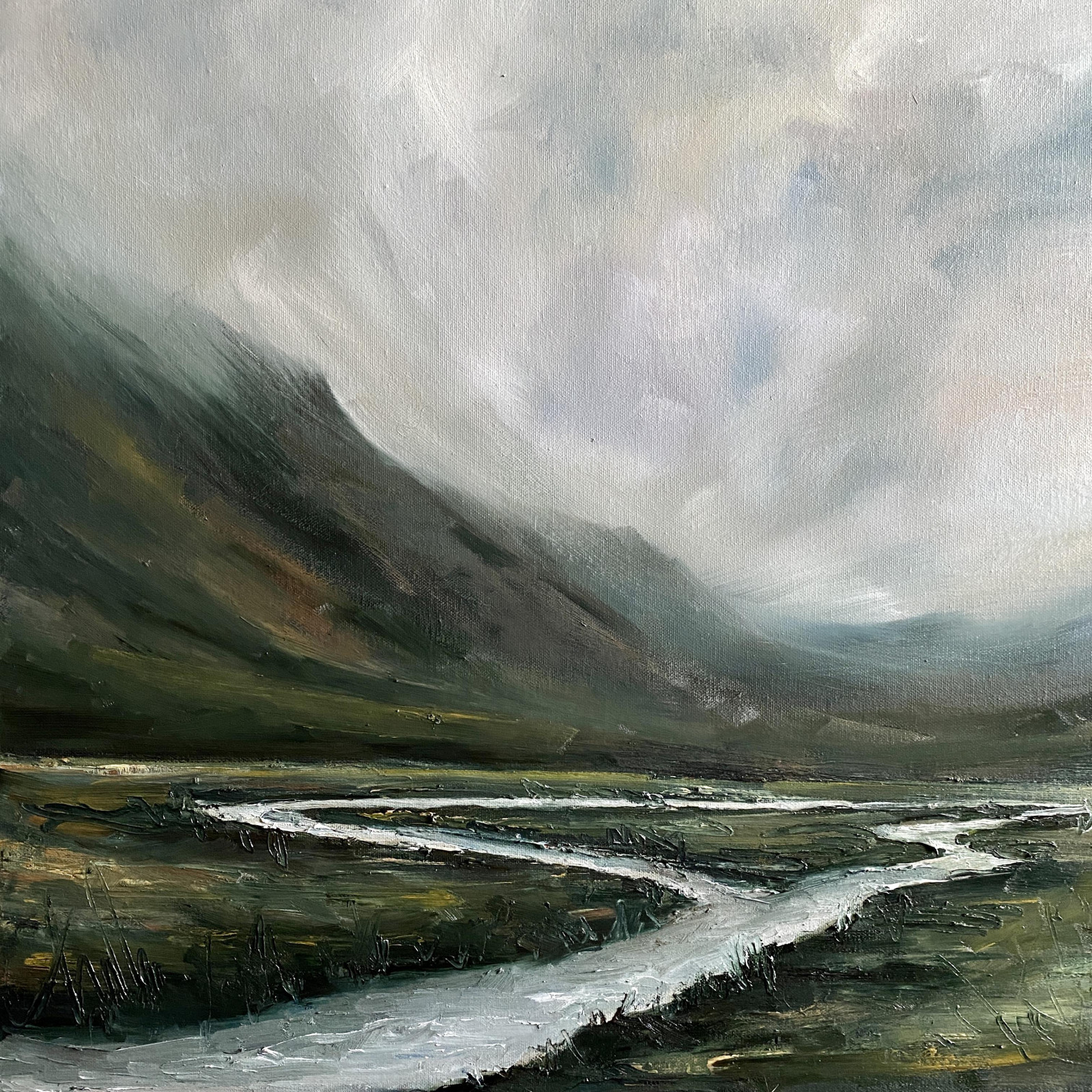
1) Walk me through a typical day in the studio for you?
JB: A usual day in the studio involves developing works previously begun on location and selecting images or parts of images taken on-site that could work in a painted format, looking for elements such as light, depth, shadow, and colour that make certain places unique.
2) What is something viewers might not know about your work?
JB: Layering is really a key part of the process, which is not obvious on the surface, some of the paintings have up to 8 layers, enhancing the depth and light of the painting with each layer.
3) What is the most challenging part of your process as an artist and what is most rewarding?
JB: The most difficult, but also the most rewarding part of a painting is trying to capture a ‘sense of place’, whether it be a landscape or seascape or other work. This part is challenging, but when everything comes together it makes the piece worth doing.
4) Is there any advice you have for artists/creators during this difficult time?
JB: What the past few years have taught me to do is pay more attention to our surroundings and the natural world, showing an appreciation of this in your work reflects something personal and meaningful about how individuals view spaces around us all.
NIKOLAI KOZIN

1) Walk me through a typical day in the studio for you?
NK: No day is typical. I tend to switch from one thing to another, even through the day – sketching, drawing, painting, digital drawing/animating.
2) What is something viewers might not know about your work?
NK: I never use photos, images, models. Only freehand, from imagination, or suggested by random marks.
3) What is the most challenging part of your process as an artist and what is most rewarding?
NK: The most challenging part is writing statements.The most rewarding part is when a good image pops up without me even thinking about it.
4) Is there any advice you have for artists/creators during this difficult time?
NK: Keep on with your practice.

